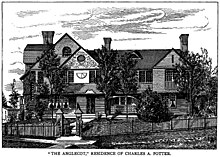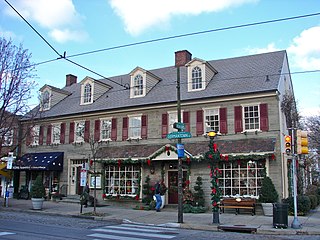
Chestnut Hill is a neighborhood in the Northwest Philadelphia section of Philadelphia, Pennsylvania, United States. It is known for the high incomes of its residents and high real estate values, as well as its private schools.
Caspar Wistar was a German-born glassmaker and landowner in Pennsylvania.

Mount Airy is a neighborhood of Northwest Philadelphia in the U.S. state of Pennsylvania.
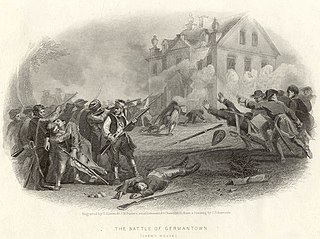
The Colonial Germantown Historic District is a designated National Historic Landmark District in the Germantown and Mount Airy neighborhoods of Philadelphia, Pennsylvania along both sides of Germantown Avenue. This road followed a Native American path from the Delaware River just north of Old City Philadelphia, through Germantown, about 6 miles northwest of Center City Philadelphia, and on to Pottstown. Settlement in the Germantown area began, at the invitation of William Penn, in 1683 by Nederlanders and Germans under the leadership of Francis Daniel Pastorius fleeing religious persecution.
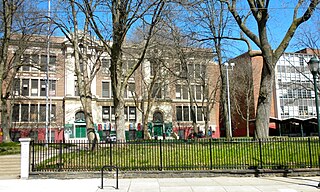
Germantown High School was a secondary school located in Philadelphia, Pennsylvania. Germantown High School graduated its final class on June 19, 2013 and closed its doors that week.

Wilson Eyre, Jr. was an American architect, teacher and writer who practiced in the Philadelphia area. He is known for his deliberately informal and welcoming country houses, and for being an innovator in the Shingle Style.
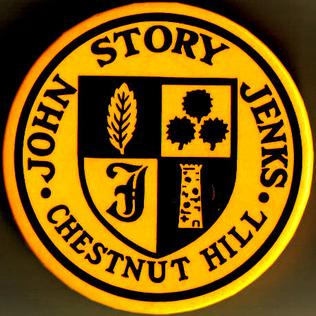
Jenks Academy for the Arts and Sciences is a public K-8 school in the Chestnut Hill section of Philadelphia, Pennsylvania, and is part of the School District of Philadelphia. Jenks serves children from kindergarten through eighth grade and has a student population of about 600. There are two classes in each grade as well as specialized programs for life skills, inclusion/learning support and gifted support. Jenks students are required to wear school uniforms.

Beggarstown or Bettelhausen was a small community that was located in the present day neighborhood of Mount Airy in Northwest Philadelphia in the U.S. state of Pennsylvania. It centered primarily along a stretch of relatively flat land along Germantown Avenue roughly between Upsal Street and Gorgas Lane.

The Wyck house, also known as the Haines house or Hans Millan house, is a historic mansion, museum, garden, and urban farm in the Germantown neighborhood of Philadelphia, Pennsylvania. It was recognized as a National Historic Landmark in 1971 for its well-preserved condition and its documentary records, which span nine generations of a single family.
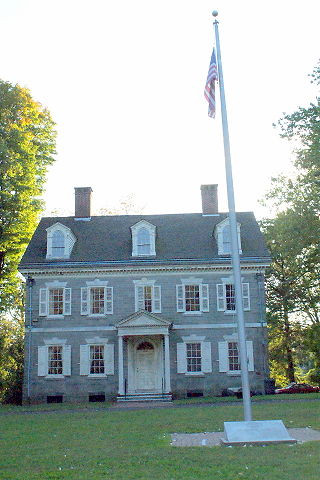
Upsala is a historic mansion in Mount Airy, Philadelphia, Pennsylvania, United States. Considered one of the finest extant examples of Federal architecture, the mansion is a contributing property of the Colonial Germantown Historic District and is listed on the National Register of Historic Places and the Philadelphia Register of Historic Places.
George Frederick Bensell was an American artist and illustrator, usually known as George Bensell, G. F. Bensell or George F. Bensell. He is best known for his paintings and role in forming the Philadelphia Sketch Club.
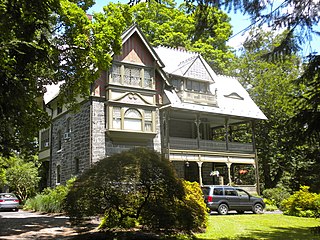
The Chestnut Hill Historic District is a historic area covering all the Chestnut Hill section of Philadelphia, Pennsylvania.
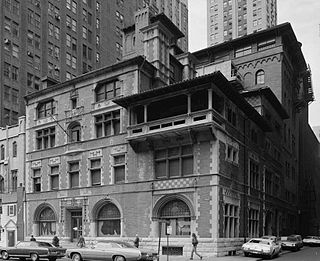
Frank Miles Day was a Philadelphia-based architect who specialized in residences and academic buildings.

St. Mary's Episcopal Church, also known as Old Saint Mary's Church, is a historic Episcopal church located on Warwick Road, Warwick Township in Elverson, Chester County, Pennsylvania. The church was built in 1843, and is a one-story, rectangular stuccoed fieldstone structure in the Gothic Revival style. It measures 50 feet wide and 70 feet deep. The church is surrounded by the parish cemetery, with burials dating to 1806.

Herman Louis Duhring Jr. was an American architect from Philadelphia, Pennsylvania. He designed several buildings that are listed on the U.S. National Register of Historic Places.

The Concord School House is a historic one-room schoolhouse in the Germantown section of Philadelphia, Pennsylvania. It is operated today as a museum. It is part of the Colonial Germantown Historic District which was named a National Historic Landmark District in 1965.

Edmund Beaman Gilchrist was an American architect, best remembered for his English-Cotswold and French-Norman suburban houses.
Robert Rhodes McGoodwin was an American architect and educator, best known for his suburban houses in the Chestnut Hill and Mount Airy sections of Philadelphia, Pennsylvania. He taught at University of Pennsylvania from 1910 to 1924, and served as a trustee of its School of Fine Arts from 1925 to 1959. McGoodwin was active in the Philadelphia Chapter of the American Institute of Architects, serving as its president in 1943.
The Lutheran Home in Germantown, now Silver Springs – Martin Luther School, began in 1859 as an orphanage for children that was originally located in the Mt. Airy, Philadelphia. This institution was a continuation of the work of Rev. William A. Passavant but was founded and managed by Elizabeth Fry Ashmead Schaeffer, who received a single dollar from Passavant and began the mission. The Lutheran Home in Germantown later moved to the Silver Springs property in Plymouth Meeting, Pennsylvania, where it continues as a residential treatment facility for children and school for elementary students and middle schoolers.
Elizabeth Carrington Morris was an American botanist who studied the flora of Philadelphia. With her sister, Margaretta Morris, she has been credited by historian Catherine McNeur as helping to transform American science in the 19th century.




